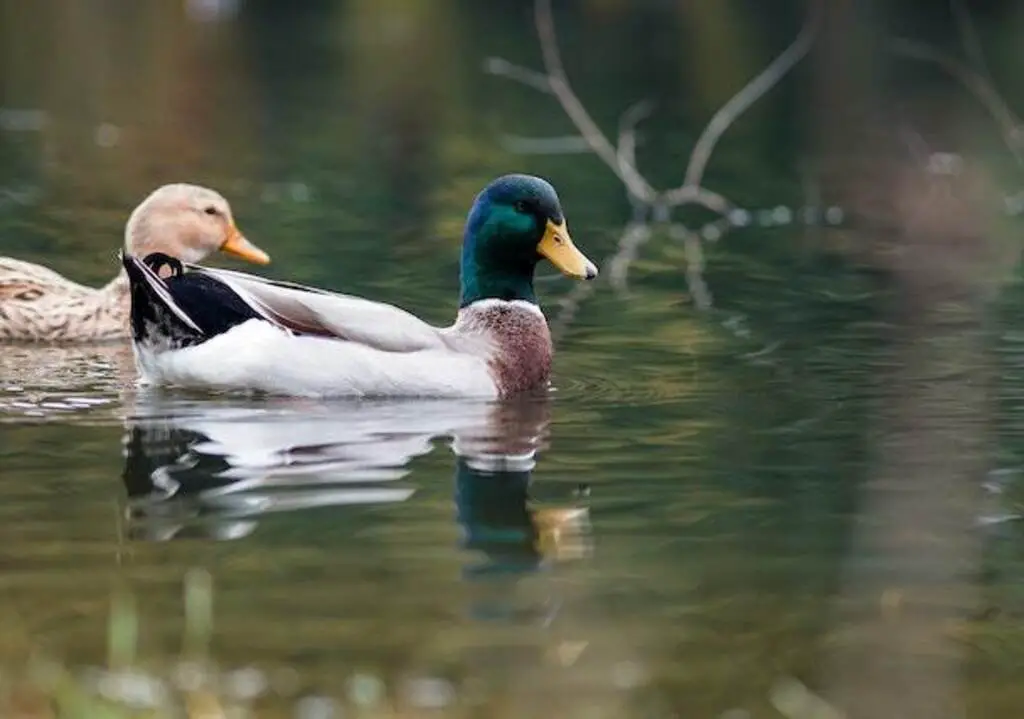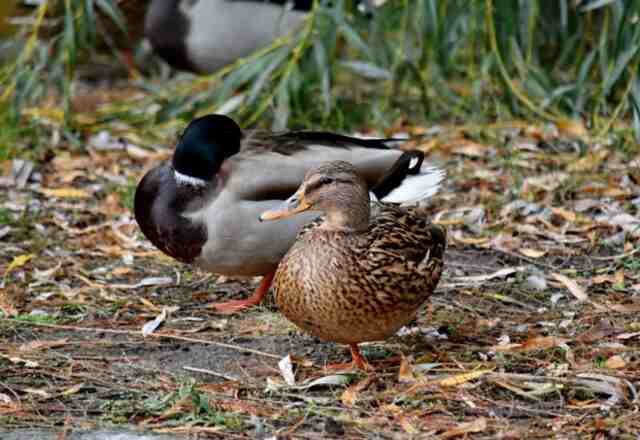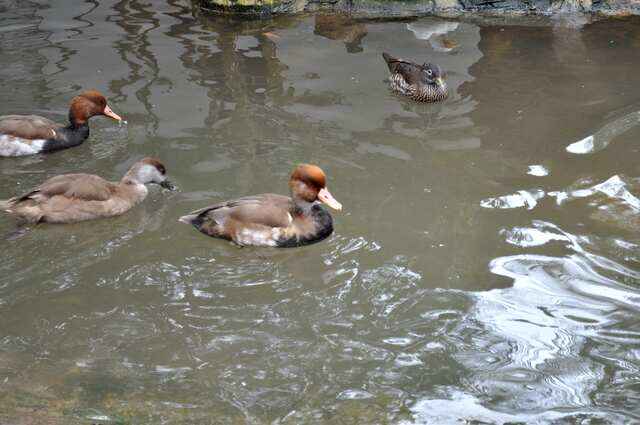If you’re a bird enthusiast, you may have wondered if ducks mate for life. The answer is not a simple yes or no. While some species of ducks form lifelong pair bonds, others mate for only one breeding season.
Understanding the mating habits of ducks may provide insight into their behavior and help with waterfowl conservation efforts.
Animal behavior is a fascinating subject, and understanding the mating habits of ducks is no exception. Ducks are social animals that form strong bonds with their mates during the breeding season.
Some species of ducks, such as geese and swans, are known for their lifelong pair bonds, while others, such as dabbling and diving ducks, mate for only one season.
The evolution of these different mating systems is still a subject of study among scientists.
Table of Contents
- 1 Do Ducks Mate for Life?
- 2 Courtship and Mating Behaviors
- 3 Examples of Duck Species Mating Behaviors
- 4 Breeding and Nesting
- 5 Migration and Wintering Grounds
- 6 Duck Species and Their Mating Habits
- 7 Male and Female Roles in Mating and Parenting
- 8 Harsh Realities of Duck Mating and Breeding
- 9 Conclusion
- 10 Author
Do Ducks Mate for Life?
When it comes to ducks, many people often wonder if they mate for life. The answer is no, most duck species do not mate for life. In this section, we’ll explore the different types of duck mating behaviors.
Definition of Monogamy
Monogamy refers to the act of having a single mate at a time. In the animal kingdom, monogamy can refer to a pair bond that lasts for a lifetime or a seasonal bond that lasts for a single breeding season.
Seasonal Monogamy
Most duck species, including dabbling, diving, and sea ducks, engage in seasonal monogamy. This means that they form a pair bond with a mate for the duration of one breeding season. Once the breeding season is over, they may find a new mate the following year.
While forming close bonds during courtship, breeding, and nesting, it is the female ducks who raise the ducklings alone, with males not taking an active role in the process.
Polygamy
Polygamy is the practice of having more than one mate at a time. Some duck species, such as the Muscovy duck, engage in polygamy. Male Muscovy ducks will mate with multiple females and may even help raise the ducklings.
Reproductive Strategies
Duck mating behavior is influenced by their reproductive strategies. Ducks have a high reproductive rate, and their eggs and ducklings are vulnerable to predation. Seasonal monogamy allows ducks to spread their genes widely and minimize the risk of losing all their offspring to predators.
Animal Behavior
Duck mating behavior is just one example of animal behavior. Animal behavior is the study of how animals interact with each other and their environment. Understanding animal behavior can help us understand how animals adapt to different environments and how we can better protect them.
In summary, most duck species engage in seasonal monogamy, which means they form a pair bond with a mate for one breeding season. Ducks have a high reproductive rate and use seasonal monogamy to spread their genes widely and minimize the risk of losing all their offspring to predators.
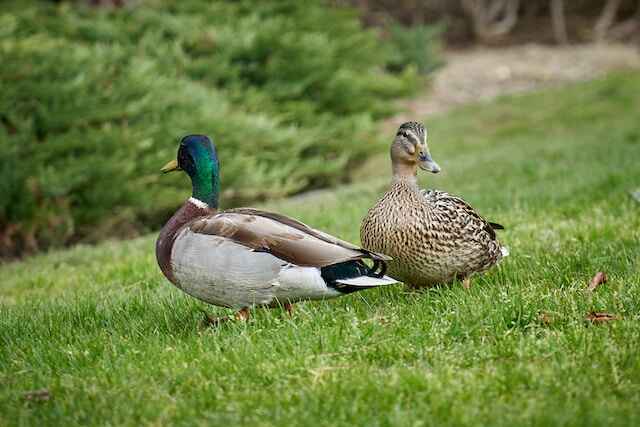
Courtship and Mating Behaviors
When it comes to courtship and mating behaviors, ducks have a unique way of expressing their interest in a potential mate. Here are some sub-sections that will help you understand the courtship and mating behaviors of ducks.
Courtship Displays
Courtship displays are an essential part of duck mating rituals. During the courtship phase, male and female ducks will engage in a series of behaviors that signal their interest in each other.
These behaviors include head bobbing, preening, and vocalizations. The male duck will also swim around the female duck in a circular motion, flapping his wings and making a whistling sound.
Mating Territories
Male ducks establish mating territories to attract females. These territories can be in the form of a small pond or a section of a larger body of water. The male duck will defend his territory against other males and will use courtship displays to attract females to his territory.
Philopatry
Philopatry is a term used to describe the tendency of ducks to return to the same breeding and wintering sites year after year. This behavior is observed in many species of waterfowl, including ducks. Philopatry helps ensure that ducks have access to the same resources year after year, which can increase their chances of survival.
Reproductive Behaviors
Once a pair of ducks has formed, they will engage in reproductive behaviors. The male duck will mount the female duck and copulate with her. After copulation, the female duck will lay her eggs in a nest that she has constructed. The male duck will not assist in the construction of the nest or the incubation of the eggs.
Male/Female Roles
In duck mating, the male and female ducks have distinct roles. The male duck is responsible for attracting a mate and defending his territory. The female duck is responsible for constructing the nest and incubating the eggs. After the eggs hatch, both male and female ducks will help care for the ducklings.
In conclusion, understanding the courtship and mating behaviors of ducks can help us appreciate the unique behaviors of these fascinating birds.

Examples of Duck Species Mating Behaviors
Ducks are known for their complex courtship and mating behaviors, which vary among species. Here are some specific examples of duck species and the types of mating behaviors they engage in:
Monogamy: In monogamous species, pairs form long-term bonds and mate exclusively with each other. Examples of monogamous duck species include:
- Mallards (Anas platyrhynchos)
- Wood ducks (Aix sponsa)
- Mandarin ducks (Aix galericulata)
Promiscuity: Promiscuous species do not form long-term bonds and mate with multiple partners. Examples of promiscuous duck species include:
- Northern pintails (Anas acuta)
- Green-winged teals (Anas crecca)
- American wigeons (Mareca americana)
Polygyny: In polygynous species, males mate with multiple females, but each female has only one mate. Examples of polygynous duck species include:
- Common eiders (Somateria mollissima)
- Barrow’s goldeneyes (Bucephala islandica)
- Hooded mergansers (Lophodytes cucullatus)
Polyandry: Polyandrous species are rare in ducks, but in these species, females mate with multiple males, and each male has only one mate. Examples of polyandrous duck species include:
- Northern shovelers (Spatula clypeata)
- Black-headed ducks (Heteronetta atricapilla)
Overall, the courtship and mating behaviors of ducks are diverse and fascinating, reflecting the evolutionary strategies that have allowed them to thrive in a wide range of environments.
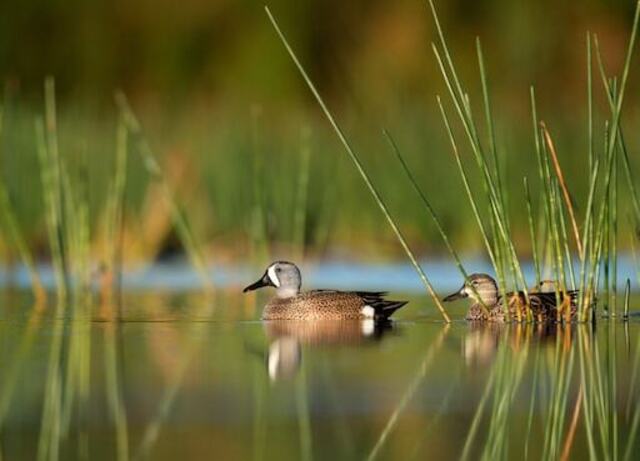
Breeding and Nesting
Breeding and nesting are important aspects of the life cycle of ducks. In this section, we will discuss the breeding and nesting habits of ducks.
Breeding Sites
Ducks prefer to breed in areas with water and vegetation. They look for areas with shallow water and plenty of food. Some ducks prefer to nest in trees or shrubs near water, while others prefer to nest on the ground.
Nesting
Ducks build their nests on the ground or in trees. They use materials such as grass, leaves, and feathers to build their nests. The female duck lays her eggs in the nest and covers them with down feathers to keep them warm.
Egg Laying
A female duck lays her eggs in groups of 6 to 12, laying one egg per day until the clutch is finished. The eggs take around 28 days to hatch after being incubated.
Parental Care
Once the eggs hatch, the female duck takes care of the ducklings. She teaches them how to swim and find food. The male duck does not take an active role in raising the ducklings.
Failed Breeding
Sometimes, breeding is unsuccessful. The female duck may abandon her nest if it is disturbed or if she feels threatened. The eggs may also fail to hatch due to environmental factors such as temperature and humidity.
Divorce
Ducks do not mate for life and may choose a different mate each breeding season. If a pair is unsuccessful in breeding, they may separate and find new mates.
In conclusion, breeding and nesting are important aspects of the life cycle of ducks. Ducks prefer to breed in areas with water and vegetation, build their nests on the ground or in trees, lay their eggs in clutches of 6 to 12 eggs, and the female duck takes care of the ducklings.
Breeding may fail due to environmental factors, and ducks may choose different mates each breeding season.
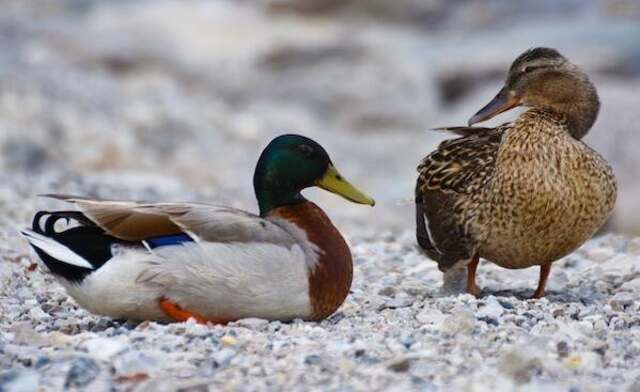
Migration and Wintering Grounds
When it comes to the mating habits of ducks, migration and wintering grounds play a crucial role. Here are some key aspects to consider:
Spring Migration
During the spring migration, many ducks will form pair bonds that will last throughout the breeding season. Male ducks will perform various courtship rituals to attract a female mate, and once paired, they will travel to their breeding grounds together.
Wintering Grounds
Wintering grounds are where many ducks will form pair bonds before migrating to their breeding grounds. Some ducks will form pair bonds while on their wintering grounds, while others may wait until the spring migration to find a mate.
Raising Young
Female ducks are responsible for raising their young alone, and they will often choose a nesting site that is close to a reliable source of food and water. During this time, male ducks may still be present, but their role is mainly to protect the female and her young from predators.
Defense Behavior
Ducks are known for their defensive behavior, especially when it comes to protecting their mate and young. Male ducks will often engage in aggressive behavior towards other males who may be a threat to their mate or territory.
Competition Among Males
Competition among males is common during the breeding season. Male ducks will compete for the attention of a female mate, and the winner will be the one who displays the most impressive courtship behavior.
Overall, ducks do not mate for life, and most will form new pair bonds each breeding season. However, the migration and wintering grounds play an essential role in the mating habits of ducks, and understanding these factors can help shed light on their behavior.

Duck Species and Their Mating Habits
Ruddy Duck
Ruddy ducks are polygamous and the males mate with multiple females. They are known for their elaborate courtship displays, which include head-pumping, splashing, and bubble-blowing. Once the female lays her eggs, the male has no role in raising the ducklings.
Musk Duck
Musk ducks have a unique mating ritual. The males inflate a large flap of skin on their neck and emit a strong musky odor to attract females. They are monogamous during the breeding season, but do not mate for life.
Comb Duck
Comb ducks are monogamous during the breeding season, but do not mate for life. The males perform elaborate courtship displays, including head-bobbing, neck-stretching, and vocalizations. Both parents take an active role in raising the ducklings.
Maccoa Duck
Maccoa ducks are monogamous during the breeding season, but do not mate for life. The males perform courtship displays, including head-bobbing and vocalizations. Both parents take an active role in raising the ducklings.
Goldeneye Ducks
Goldeneye ducks are monogamous during the breeding season, but do not mate for life. The males perform courtship displays, including head-bobbing and wing-flapping. Both parents take an active role in raising the ducklings.
Mallard Ducks
During the breeding season, Mallard ducks practice monogamy, but they do not mate for life. The males perform elaborate courtship displays, including head-bobbing, tail-flicking, and vocalizations. Both parents take an active role in raising the ducklings.
Hybrid breeds may exhibit a combination of the mating habits of their parent species. It is important to note that while some duck species may mate for life during the breeding season, this does not necessarily mean they will remain faithful to their mate in subsequent breeding seasons.
Male and Female Roles in Mating and Parenting
Mating Partner
When it comes to mating, most wild duck species pair up for a single breeding season, also known as seasonal monogamy. During courtship, males and females create strong bonds, but once the eggs hatch, males play no active role in raising the ducklings.
Many types of dabbling, diving, and sea ducks change their partners each breeding season instead of forming lifelong bonds or reuniting with their previous mates.
Female Ducks
It is the female ducks who single-handedly raise the ducklings. After mating, the female duck will lay her eggs in a nest she has built, usually near water.
She will then incubate the eggs for around 28 days, during which time she will rarely leave the nest, relying on the male to bring her food.
Male Abandonment
Once the eggs hatch, the male duck may abandon the female and the ducklings. This is because the male’s role is to protect the female during incubation, and after the eggs hatch, the female can defend the ducklings on her own. The male may also abandon the female if he finds a new mate.
Female Incubation
During incubation, the female duck will turn the eggs regularly to ensure that they develop properly. She may also pluck feathers from her breast to line the nest, which helps to keep the eggs warm and dry.
Offspring Care
Once the ducklings hatch, the female will lead them to water, where they will learn to swim and feed themselves. Female ducks are very protective of their young and will fiercely defend them against predators.
Precocial Ducklings
Ducklings are precocial, which means that they are born with their eyes open and are able to walk and swim shortly after hatching. They are also able to regulate their body temperature and find food on their own, although they will still rely on their mother for protection and guidance.
In summary, male and female ducks have different roles in mating and parenting. While males play an important role in courtship and protecting females during incubation, females are responsible for incubating the eggs, raising the ducklings, and defending them against predators.
Harsh Realities of Duck Mating and Breeding
Productivity
Ducks are not always successful in breeding and may face challenges such as infertility, disease, and predation. Factors like habitat loss and climate change can also impact their productivity.
Harvest
Ducks are a popular game bird and are hunted for sport and food. While hunting regulations help manage duck populations, over-harvesting can lead to a decline in numbers.
Predation
Ducks face predation from several sources, including mammals, birds of prey, and reptiles. Predation can impact duck populations, especially during breeding seasons.
Population Management
Population management is crucial in ensuring the long-term survival of duck species. This involves monitoring populations, regulating hunting, and conserving habitats.
Breeding Grounds
Ducks require specific habitats for breeding, including wetlands and marshes. Habitat loss and degradation can impact breeding success and population numbers.
Staging Areas
Staging areas are important stopover sites for ducks during migration. These areas provide food and shelter for ducks during their journey. Habitat loss and degradation can impact staging areas and affect duck populations.
In conclusion, duck mating and breeding can be challenging, and ducks face several threats to their survival. Population management, habitat conservation, and hunting regulations are crucial in ensuring the long-term survival of duck species.
Conclusion
In conclusion, ducks are not known to mate for life, unlike geese. While they may form close bonds with one another during the breeding season, they tend to switch partners with each new breeding season.
The breeding process for ducks involves males pursuing females and forced mating. However, drowning is a real risk during this process as it takes place on water.
Domestic ducks, like their wild counterparts, do not mate for life. They need the company of others and prefer to be around their own kind.
During the incubation period, female ducks are the ones who raise the ducklings alone. They are nurturing and affectionate towards their young ones.
In summary, while ducks are not known for their commitment to one partner, they do show true love and affection towards their offspring. Their true nature is social, and they prefer to be around others of their kind.

